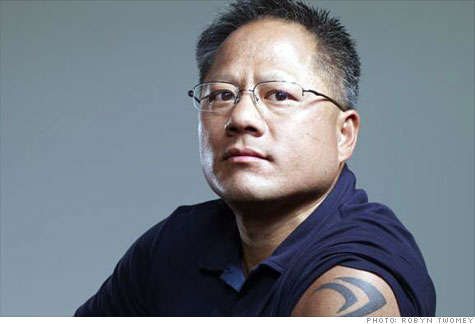
When Jen-Hsun Huang (pronounced Jenson Wong) was 10 years old, his Taiwanese parents sent him to a boarding school in rural Kentucky. It turned out to be a reform school, where Huang was the youngest kid, and he and his brother the only Chinese. "I got beat up now and then," he says. "But I learned how to survive."
Now Huang, the co-founder and CEO of graphics chipmaker Nvidia, is facing down one of the tech world's most notorious tough guys: He claims Intel breached its contract with Nvidia by locking it out of the market for so-called chipsets that are compatible with Intel's newest processors. Now, in a lawsuit, Huang wants Intel stripped of what it got out of that contract -- access to Nvidia's patent portfolio relating to graphics technologies. Huang believes that in today's world of mobile, visually rich computing, virtually every chip in Intel's pipeline will eventually need inventions covered by his portfolio.
To Huang, age 47, this is no ordinary contract dispute; it's an epic battle over the soul of tomorrow's PCs, tablets, and smartphones. "Computing is more about graphics than ever," he says. "Look at the iPad. Look at the iPhone. It's all about graphics."
Just a few years ago Nvidia (NVDA) catered to a niche market of videogame fanatics who were willing to pay extra for extraordinary graphics. Intel (INTC, Fortune 500), meanwhile, catered to everyone with a PC; its central processing units (CPUs) act as the brains of those devices.
But the "parallel" computing approach used in graphics chips is more efficient for many increasingly vital computing functions, like running high-definition videos and editing 3-D graphics, and also for performing some functions once handled by CPUs, such as sophisticated mathematical modeling tasks. With Nvidia's graphics chips encroaching on territory dominated by Intel, the companies have been on a collision course. LINK


